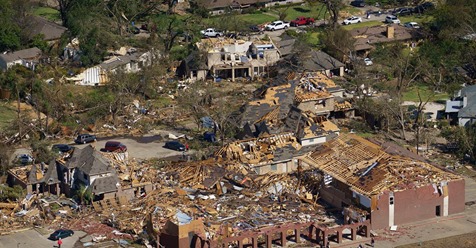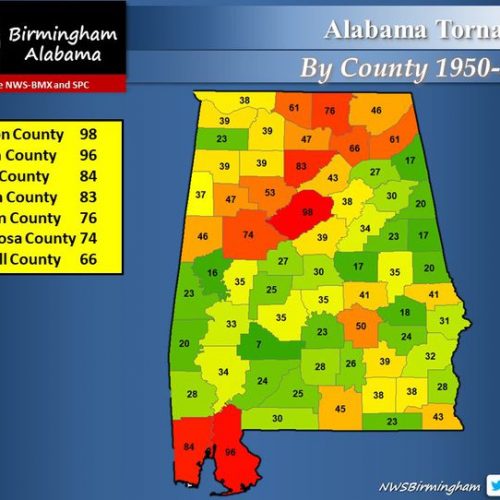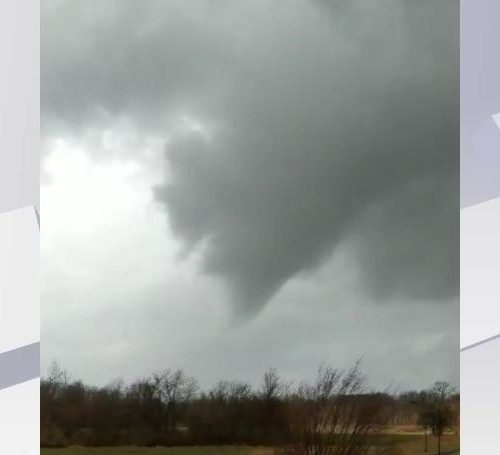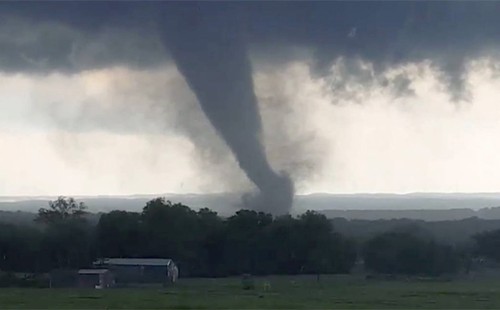Hours after 10 tornadoes tore through North Texas late Sunday, meteorologists gathered at the National Weather Service in Fort Worth early Monday to start working on a puzzle.
Some of the pieces were photos of damage sent in by residents, storm spotters and law enforcement officials. Others were videos showing a tornado when lightning struck and illuminated the night sky. The rest were radar images captured at the time of the storms.
Their goal was to piece all the evidence together to determine which cities were hit by a tornado, how prevalent and how strong the storms were, and how far and wide the twisters traveled.
By gathering the clues — storm damage pictures, videos and radar images — meteorologists decided where they needed to visit to survey the damage. Later that morning, they split up into teams and deployed across North Texas to take a closer look at the destruction.
Making sense of the mess
The surveys ultimately confirmed Sunday night’s storms produced 10 tornadoes: four EF-0 storms in Allen, Ferris, Kaufman County and Wills Point; four EF-1 whirlwinds in Kaufman County, Midlothian, Rowlett and Rockwall; an EF-2 twister in Garland; and the EF-3 monster that tracked from northwest Dallas to Richardson.
The strongest storm of the night, which tore through North Dallas and Richardson, was also one of the most difficult to assess.
“With such a large coverage area, it’s going to be hard to see every bit of damage,” said Sarah Barnes, a weather service meteorologist.
Surveyors determined the Dallas tornado was on the ground for more than 15 miles, tearing a path up to three-quarters of a mile wide. Survey teams were aided by the fact that the tornado struck a densely populated area, said Patricia Sanchez, another meteorologist with the weather service.
“Sometimes it’s a little more complicated when [a tornado] happens in the country,” where a lack of paved roads and buildings makes it harder to determine the storm’s path, she said.
When survey teams assess storm damage, they rate it on a scale of 8 degrees, where visible damage such as lost roof shingles registers a 1, up to an 8 where the concrete slab under a home is swept clean.
A house that was destroyed on North Haven Road in North Dallas was the clue survey teams needed to determine an EF-3 had passed through the area, according to the storm report. It was the strongest twister to hit that area since May 26, 1976, according to the weather service.
The house’s roof had been completely torn off, and several exterior walls had collapsed, according to the storm report. Collapsed exterior walls rank as a 7 on the degrees of damage scale for a single-family home. The boundary for damage that bad ranges from 113 to 153 mph winds.
Survey teams estimated the tornado produced 140 mph winds in the neighborhood, which helped them rate it as a low-end EF-3.
Debbi Bird, who lives in the neighborhood, lost the roof to her home during the storm while she took shelter in the basement.
“We didn’t know if the house was collapsed on top of us or not,” Bird said.
The Dallas tornado topped out at EF-3 but its power ebbed and flowed during its 32-minute track. Tree damage and minor roof damage near State Highway 348 and Luna Road in northwest Dallas helped surveyors determine the tornado’s starting point. Farther east, extensive damage to businesses and homes near Harry Hines Boulevard and Walnut Hill Lane showed signs that it had strengthened to an EF-1 and then to EF-2.
More than 15 miles later, east of Arapaho and Jupiter roads in Richardson, tree damage was consistent with 70 mph winds, indicating that the tornado had weakened to an EF-0 before it dissipated.
Straight-line winds vs. tornadoes
Sometimes surveyors examine damage after a storm passes and determine there was no tornado. That was the case in Stephenville, where survey teams blamed roof and tree damage on straight-line winds of up to 80 mph.
When assessing storm damage, surveyors look at how the debris was scattered, Sanchez said. It’s a good indication of a tornado when that debris is scattered in several directions, she said. But when you know a storm was moving west to east, and all of the broken tree limbs and shingles were blown eastward, that helps survey teams rule out a tornado, Sanchez said.
“A tornado is very localized,” she said, adding that sometimes straight-line winds cause more widespread damage. “It’s very impressive to see.”
Sanchez said the Home Depot that took a direct hit near Forest Lane and Central Expressway shows just how focused tornado damage can be. The roof and some exterior walls of the big-box store collapsed, but a building next to the Home Depot was unscathed. Evidence like that also helped survey teams to pin down the path the tornado traveled.
Looking back and forward
It’s been more than 40 years since a tornado as strong as Sunday’s hit Dallas.
But the city’s suffered through lesser storms: An EF-2 tore through portions of North Dallas and Irving on Sept. 8, 2010.
In Dallas County overall, the most recent EF-3 was a deadly twister on Dec. 26, 2015, that ripped through Garland and Rowlett.
And while the number of tornadoes continues to rise nationwide, they’re coming on fewer days per year. In other words, the storms that spin off tornadoes are producing them in swarms, according to tornado data from the National Weather Service.
Whether climate change is to blame for the changes remains unclear. In recent years, North Texas has seen heat waves, droughts and other extreme weather, and a warmer climate does provide more favorable conditions for a tornado to form, weather service meteorologist Lee Carlaw said.
“As temperature increases linearly, you exponentially increase the amount of moisture the air can hold,” Carlaw said. “If you have increased moisture, and you can get a storm system on top of that with the right amount of wind shear, your chances of producing a tornado would increase.”
However, if the whole year warms uniformly, the annual number of tornadoes could remain consistent, but their distribution throughout the year would change, said Patrick Marsh, a meteorologist at the National Weather Service Storm Prediction Center.
For example, more tornadoes might occur in the winter, like the post-Christmas tornado in 2015, than in the summer.
There isn’t enough historical data available for meteorologists to link the number and strength of tornadoes in a certain year to climate change, according to weather service meteorologist Lamont Bain.
“Climate is certainly evolving,” he said, “but to what degree is unknown at this point.”
Computational journalist Ariana Giorgi contributed to this report.
by Jesus Jimenez (2019, Oct 25) The Dallas Morning News





